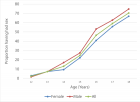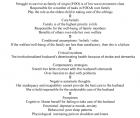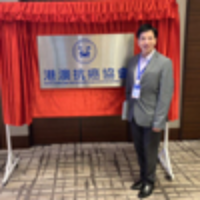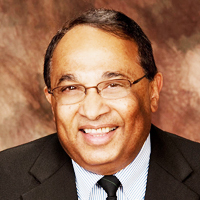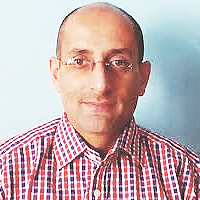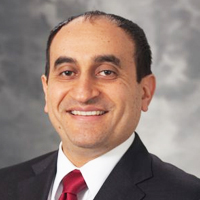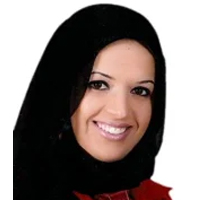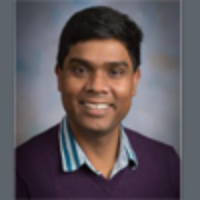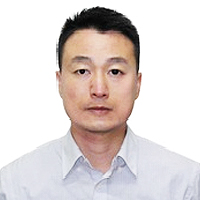Abstract
Mini Review
Organizational and Human Factors in Dentistry: A Macroergonomic Approach to Maximize Dental Practice Performance and Minimize Burnout and Psychophysical Stress
Juan Carlos Ortiz Hugues*
Published: 16 December, 2024 | Volume 8 - Issue 1 | Pages: 047-051
The psychophysical impact of a high-complexity environment such as the dental office is not a novelty. This article outlines the organizational and human factors that impact the overall health of dentists, assistants, hygienists, and administrative staff. A careless organizational and human factors approach cannot only function as a stress and error trigger but also affect the highly precise requirements of dentistry and task performance in the daily demands of the office.
Ergonomics and human factors principles guidelines should be structured and taught from the basics in dental schools and supported by prevention programs and interventions in the dental professional field, as in other industries, to promote safety, health, and efficiency within the integration of humans, systems, and environments.
Usually, the main focus of dentistry research is the physical aspect of the job; the high rates of musculoskeletal disorders are a real problem, but the cognitive-organizational element of the job is not a minimal issue, which highly contributes to physical-emotional exhaustion in the work environment.
A fatigued mind impacts the physical aspect of the job, and physical fatigue impacts the mental aspect of the job. This dual effect in a job that requires dealing with anxiety and fear patients, administrative situations in the office, financial aspects, and technical and skill aspects from the dentist, among other requirements, makes dentistry a unique profession.
This article addresses the components of the factors that promote cognitive depletion in our field and provides simple tips on controlling them to avoid burnout among dentists. It highlights the importance of awareness of how we manage the organization in the office and the effect on human behavior and performance. It wants to bring to light a common problem for dental practitioners and the workforce to prevent health and performance decrease.
Read Full Article HTML DOI: 10.29328/journal.jcad.1001046 Cite this Article Read Full Article PDF
References
- Cavalcante JL, Pinto AGA, Brito FE, Júnior, Moreira MRC, Lopes MVS, Rocha Cavalcante EG. Estresse ocupacional dos funcionários de uma universidade pública. Enferm Foco. 2019;10(4):108–15. Available from: http://dx.doi.org/10.21675/2357-707X.2019.v10.n4.2310
- Gupta A, Bhat M, Mohammed T, Bansal N, Gupta G. Ergonomics in dentistry. Int J Clin Pediatr Dent. 2014;7(1):30-4. Available from: https://doi.org/10.5005/jp-journals-10005-1229
- Marcum JA. An integrated model of clinical reasoning: dual-process theory of cognition and metacognition. J Eval Clin Pract. 2012;18:954–61. Available from: https://doi.org/10.1111/j.1365-2753.2012.01900.x
- Eva KW. What every teacher needs to know about clinical reasoning. Med Educ. 2005;39:98–106. Available from: https://doi.org/10.1111/j.1365-2929.2004.01972.x
- Scandurra C, Gasparro R, Dolce P, Bochicchio V, Muzii B, Sammartino G, et al. The role of cognitive and non-cognitive factors in dental anxiety: A mediation model. Eur J Oral Sci. 2021;129(4):e12793. Available from: https://doi.org/10.1111/eos.12793
- American Psychological Association. Psychologists, helping businesses and organizations. American Psychological Association. 2013. Available from: https://www.apa.org/education-career/guide/paths/business
- Grunberg NE, McManigle JE, Barry ES. Applying Classic Social Psychology Principles to Improve Healthcare Teams. MedEdPublish. 2021;9:251. Available from: https://doi.org/10.15694/mep.2020.000251.2
- Maake G. Assessment of motivational level in the workplace: Evidence from administrative employees. Int J Bus Ecosyst Strateg. 2024;6(3):106-16. Available from: https://doi.org/10.36096/ijbes.v6i3.497
- McDermott O, Antony J, Bhat S, Jayaraman R, Rosa A, Marolla G, et al. Lean Six Sigma in healthcare: A systematic literature review on motivations and benefits. Processes. 2022;10(10):1910. Available from: https://doi.org/10.3390/pr10101910
- Zhang M, Murphy B, Cabanilla A, Yidi C. Physical relaxation for occupational stress in healthcare workers: A systematic review and network meta-analysis of randomized controlled trials. J Occup Health. 2021;63(1):e12243. Available from: https://doi.org/10.1002/1348-9585.12243
- Harris K, Russ S. Patient-completed safety checklists as an empowerment tool for patient involvement in patient safety: concepts, considerations, and recommendations. Future Healthc J. 2021;8(3):e567-e573. Available from: https://doi.org/10.7861/fhj.2021-0122
- Marques-Sule E, Miró-Ferrer S, Muñoz-Gómez E, Bermejo-Fernández A, Juárez-Vela R, Gea-Caballero V, et al. Physical activity in healthcare professionals as a means of primary prevention of cardiovascular disease: A STROBE compliant cross-sectional study. Medicine (Baltimore). 2021;100(22):e26184. Available from: https://doi.org/10.1097/md.0000000000026184
- Schilbach M, Haun VC, Baethge A, Rigotti T. The challenging and hindering potential of time pressure: Qualitative job demands as suppressor variables. J Bus Psychol. 2023;38:1061–75. Available from: https://link.springer.com/article/10.1007/s10869-022-09844-w
- Rasool SF, Wang M, Tang M, Saeed A, Iqbal J. How toxic workplace environment affects employee engagement: The mediating role of organizational support and employee wellbeing. Int J Environ Res Public Health. 2021;18(5):2294. Available from: https://doi.org/10.3390/ijerph18052294
- Sjøgaard G, Lundberg U, Kadefors R. The role of muscle activity and mental load in the development of pain and degenerative processes at the muscle cell level during computer work. Eur J Appl Physiol. 2000;83(2-3):99-105. Available from: https://doi.org/10.1007/s004210000285
- Pronk NP, Martinson BC, Kessler RC, Beck AL, Simon GE, Wang P. The association between work performance and physical activity, cardiorespiratory fitness, and obesity. J Occup Environ Med. 2004;46(1):19-25. Available from: https://doi.org/10.1097/01.jom.0000105910.69449.b7
- Parry DA, Oeppen RS, Amin MSA, Brennan PA. Sleep: its importance and the effects of deprivation on surgeons and other healthcare professionals. Br J Oral Maxillofac Surg. 2018;56(8):663-666. Available from: https://doi.org/10.1016/j.bjoms.2018.08.001
- Plessas A, Nasser M, Hanoch Y, O'Brien T, Bernardes Delgado M, Moles D. Impact of time pressure on dentists' diagnostic performance. J Dent. 2019;82:38-44. Available from: https://doi.org/10.1016/j.jdent.2019.01.011
- Portoghese I, Galletta M, Coppola RC, Finco G, Campagna M. Burnout and workload among healthcare workers: the moderating role of job control. Saf Health Work. 2014;5(3):152-7. Available from: https://doi.org/10.1016/j.shaw.2014.05.004
- Langner R, Eickhoff SB. Sustaining attention to simple tasks: a meta-analytic review of the neural mechanisms of vigilant attention. Psychol Bull. 2013;139(4):870-900. Available from: https://doi.org/10.1037/a0030694
- Gawron V. Human Performance and Situation Awareness Measures. 3rd ed. CRC Press; 2019. Available from: https://doi.org/10.1201/9780429001024
- Bud M, Jitaru S, Lucaciu O, Korkut B, Dumitrascu-Timis L, Ionescu C, et al. The advantages of the dental operative microscope in restorative dentistry. Med Pharm Rep. 2021;94(1):22-27. Available from: https://doi.org/10.15386/mpr-1662
- Skinner A, Diller D, Kumar R, Cannon-Bowers J, Smith R, Tanaka A, et al. Development and application of a multi-modal task analysis to support intelligent tutoring of complex skills. Int J STEM Educ. 2018;5(1):14. Available from: https://doi.org/10.1186/s40594-018-0108-5
- Finkbeiner BL. Four-handed dentistry: instrument transfer. J Contemp Dent Pract. 2001;2(1):57-76. Available from: https://pubmed.ncbi.nlm.nih.gov/12167944/
- Kracher C, Breen C, McMahon K, Gagliardi L, Miyasaki C, Landsberg K, et al. The evolution of the dental assisting profession. J Dent Educ. 2017;81(9):eS30-eS37. Available from: https://doi.org/10.21815/jde.017.031
- S. Department of Labor, Occupational Safety and Health Administration (OSHA). Long Work Hours, Extended or Irregular Shifts, and Worker Fatigue. Available from: https://www.osha.gov/worker-fatigue/hazards
- World Health Organization (WHO). Burn-Out an “Occupational Phenomenon”: International Classification of Diseases. WHO; 2019. Available from: https://www.who.int/news/item/28-05-2019-burn-out-an-occupational-phenomenon-international-classification-of-diseases
- Maslach C, Schaufeli WB, Leiter MP. Job burnout. Annu Rev Psychol. 2001;52:397-422. Available from: https://doi.org/10.1146/annurev.psych.52.1.397
- Shanafelt TD, Boone S, Tan L, Dyrbye LN, Sotile W, Satele D, et al. Burnout and satisfaction with work-life balance among US physicians relative to the general US population. Arch Intern Med. 2012;172(18):1377-85. Available from: https://doi.org/10.1001/archinternmed.2012.3199
- Afrashtehfar KI, Jurado CA. The dental profession experiences high prevalence rates of burnout and emotional exhaustion. J Evid Based Dent Pract. 2023;23(3):101886. Available from: https://doi.org/10.1016/j.jebdp.2023.101886
- Murthy VH. Confronting health worker burnout and well-being. N Engl J Med. 2022;387(7):577-579. Available from: https://doi.org/10.1056/nejmp2207252
- Razai MS, Majeed A. General practice in England: the current crisis, opportunities, and challenges. J Ambul Care Manag. 2022;45(2):135-139. Available from: https://doi.org/10.1097/jac.0000000000000410
- Waldo OA. The 3 “Rs” Relax, Reflect, and Regroup. Avoiding Burnout During Cardiology Fellowship. J Am Coll Cardiol. 2015;66(11). Available from: http://dx.doi.org/10.1016/j.jacc.2015.07.054
Figures:

Figure 1
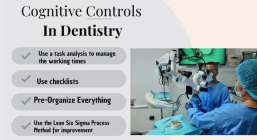
Figure 2
Similar Articles
-
Bilateral Parasymphyseal OsteomaAkanksha Gupta,Sangeeta Singh Malik,Swati Gupta,Ravi Prakash SM*. Bilateral Parasymphyseal Osteoma. . 2017 doi: 10.29328/journal.hjd.1001001; 1: 001-004
-
“Bulls Eye For Bulls Teeth”- Endodontic Management of Taurodontism Using CBCT as A Diagnostic Tool- 2 Rare Case ReportsSapna Sonkurla,Manoj Mahadeo Ramugade*,Shubha Hegde,Gopal Tawani. “Bulls Eye For Bulls Teeth”- Endodontic Management of Taurodontism Using CBCT as A Diagnostic Tool- 2 Rare Case Reports. . 2017 doi: 10.29328/journal.hjd.1001002; 1: 005-011
-
Diagnosis and Treatment of Anterior Cracked Tooth: A Case ReportWellington Luiz de Oliveira Da Rosa,Lucas Pradebon Brondani,Tiago Machado Da Silva,Evandro Piva, Fernandes Da Silva*. Diagnosis and Treatment of Anterior Cracked Tooth: A Case Report. . 2017 doi: 10.29328/journal.hjd.1001003 ; 1: 012-020
-
The Neuromuscular diseases in Pediatric Dental OfficeAmbarkova Vesna*. The Neuromuscular diseases in Pediatric Dental Office. . 2017 doi: 10.29328/journal.hjd.1001004; 1: 021-025
-
Fabrication of Lingual Retainer made easyMadhvi Bhardwaj, Shantanu Khattri,Rohit Kulshrestha*. Fabrication of Lingual Retainer made easy. . 2017 doi: 10.29328/journal.hjd.1001005; 1: 026-027
-
Staining susceptibility of recently developed resin composite materialsOlivier Duc,Emilie Betrisey, Enrico Di Bella, Ivo Krejci,Stefano Ardu*. Staining susceptibility of recently developed resin composite materials. . 2018 doi: 10.29328/journal.jcad.1001006; 2: 001-007
-
Preventing Peri-implantitis with a proper Cementation Protocol and with the consideration of alternatives to Cement-Retained Implant RestorationsTony Daher*,Robert G Mokbel, Vahik P Meserkhani. Preventing Peri-implantitis with a proper Cementation Protocol and with the consideration of alternatives to Cement-Retained Implant Restorations. . 2018 doi: 10.29328/journal.jcad.1001007; 2: 008-017
-
How Condylar modifications occursRohit Kulshrestha*. How Condylar modifications occurs. . 2018 doi: 10.29328/journal.jcad.1001008; 2: 018-019
-
Colour keys to emotion in management of children and intellectual distraction using coloured games in dental environment for childrenRajakumar S*,Kavitha Ramar, Revanth MP. Colour keys to emotion in management of children and intellectual distraction using coloured games in dental environment for children. . 2019 doi: 10.29328/journal.jcad.1001009; 3: 001-003
-
Cranio-Facial Fibrous Dysplasia: A case report of a conservative treatment in a monostotic form associated with an orthodontic management and a bone graft of the non-lytic bone area for dental implant rehabilitationSeban A*,Blein E,Perez S,Seban B. Cranio-Facial Fibrous Dysplasia: A case report of a conservative treatment in a monostotic form associated with an orthodontic management and a bone graft of the non-lytic bone area for dental implant rehabilitation. . 2019 doi: 10.29328/journal.jcad.1001011; 3: 018-022
Recently Viewed
-
Cystoid Macular Oedema Secondary to Bimatoprost in a Patient with Primary Open Angle GlaucomaKonstantinos Kyratzoglou*,Katie Morton. Cystoid Macular Oedema Secondary to Bimatoprost in a Patient with Primary Open Angle Glaucoma. Int J Clin Exp Ophthalmol. 2025: doi: 10.29328/journal.ijceo.1001059; 9: 001-003
-
Metastatic Brain Melanoma: A Rare Case with Review of LiteratureNeha Singh,Gaurav Raj,Akshay Kumar,Deepak Kumar Singh,Shivansh Dixit,Kaustubh Gupta*. Metastatic Brain Melanoma: A Rare Case with Review of Literature. J Radiol Oncol. 2025: doi: ; 9: 050-053
-
Depression as a civilization-deformed adaptation and defence mechanismBohdan Wasilewski*,Olha Yourtsenyuk,Eugene Egan. Depression as a civilization-deformed adaptation and defence mechanism. Insights Depress Anxiety. 2020: doi: 10.29328/journal.ida.1001013; 4: 008-011
-
Drinking-water Quality Assessment in Selective Schools from the Mount LebanonWalaa Diab, Mona Farhat, Marwa Rammal, Chaden Moussa Haidar*, Ali Yaacoub, Alaa Hamzeh. Drinking-water Quality Assessment in Selective Schools from the Mount Lebanon. Ann Civil Environ Eng. 2024: doi: 10.29328/journal.acee.1001061; 8: 018-024
-
Rapid Microbial Growth in Reusable Drinking Water BottlesQishan Liu*,Hongjun Liu. Rapid Microbial Growth in Reusable Drinking Water Bottles. Ann Civil Environ Eng. 2017: doi: 10.29328/journal.acee.1001007; 1: 055-062
Most Viewed
-
Evaluation of Biostimulants Based on Recovered Protein Hydrolysates from Animal By-products as Plant Growth EnhancersH Pérez-Aguilar*, M Lacruz-Asaro, F Arán-Ais. Evaluation of Biostimulants Based on Recovered Protein Hydrolysates from Animal By-products as Plant Growth Enhancers. J Plant Sci Phytopathol. 2023 doi: 10.29328/journal.jpsp.1001104; 7: 042-047
-
Sinonasal Myxoma Extending into the Orbit in a 4-Year Old: A Case PresentationJulian A Purrinos*, Ramzi Younis. Sinonasal Myxoma Extending into the Orbit in a 4-Year Old: A Case Presentation. Arch Case Rep. 2024 doi: 10.29328/journal.acr.1001099; 8: 075-077
-
Feasibility study of magnetic sensing for detecting single-neuron action potentialsDenis Tonini,Kai Wu,Renata Saha,Jian-Ping Wang*. Feasibility study of magnetic sensing for detecting single-neuron action potentials. Ann Biomed Sci Eng. 2022 doi: 10.29328/journal.abse.1001018; 6: 019-029
-
Pediatric Dysgerminoma: Unveiling a Rare Ovarian TumorFaten Limaiem*, Khalil Saffar, Ahmed Halouani. Pediatric Dysgerminoma: Unveiling a Rare Ovarian Tumor. Arch Case Rep. 2024 doi: 10.29328/journal.acr.1001087; 8: 010-013
-
Physical activity can change the physiological and psychological circumstances during COVID-19 pandemic: A narrative reviewKhashayar Maroufi*. Physical activity can change the physiological and psychological circumstances during COVID-19 pandemic: A narrative review. J Sports Med Ther. 2021 doi: 10.29328/journal.jsmt.1001051; 6: 001-007

HSPI: We're glad you're here. Please click "create a new Query" if you are a new visitor to our website and need further information from us.
If you are already a member of our network and need to keep track of any developments regarding a question you have already submitted, click "take me to my Query."







